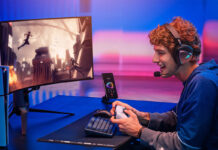
So we’ve all heard the old Hollywood cliche: ‘Never work with children or animals’. But for those us who love to make portraits, sometimes kids and pets are the only models available to us! So today I’m going to give you some tips and techniques for photographing these adorable, frustrating subjects.
Your Subject’s Perspective
Most of the time when we observe our kids and pets we do from so above, because for the most part they’re smaller than us. But when we really want to engage with them what’s the first thing we do? We get down on their level. And yet all too often when we photograph them we do so from a standing position. So my first tip is: get down on your subject’s level. This is kind of a basic rule of documentary photography too; try to tell a story from your subject’s perspective.
A Classic Trick
Key points …
|
The other good thing about being on your kid or pet’s level is that it allows to really engage with them. Most people know instinctively that if you want your child’s attention for a photo then you need to get their attention and try to entertain them. One of the classic tricks portrait photographers use is to keep a little toy handy, preferably one that makes an interesting sound. This will probably work equally well for your pet.
Spray And Pray
It can be a bit of a knack trying to goof around while shooting photos at the same, which leads me nicely to my next tip: shoot in continuous mode. If you’re not sure how to do this, just take a peek at your camera’s manual, almost every camera (and certainly every DSLR) will have a mode which allows you to take a bunch of shots in a single burst, as long as you keep the shutter button pressed. Kids and pets are nothing if not unpredictable, so it pays to be liberal with your frames, or ‘spray and pray’ as seasoned photographers like to say! Now I should point out the downside of this technique; you end up with a lot of files, which means you get a lot more files to sort through afterwards, which can be a bit of a drag.

Closer!
Composition is a subject that you could read an entire book about, but all I’m going to say today is: get closer. It seems that our instinct is to get all of our subject into our shots, plus a good deal of the surroundings as well, and by doing so we dilute our images to the point where they lack any real impact. So get closer, and then get a bit closer, and finally, just get a tad closer again.
No Flash Please
Now this wouldn’t be a photography article if I didn’t talk about light, would it? So before I go any further let me say this: puh-leeease turn off that awful on-board flash that pops up on the top of your camera. On-camera flash is just plain bad. It’s flat and boring and robs a photo of all mood and emotion. Again, you might have to consult your manual to do this, but trust me it’s worth the effort.
Find A Window
My preference when making portraits is to use natural light. It’s flattering, it’s widely available, and it requires no additional equipment. If you’re shooting indoors, position your subject near a window, but don’t point your camera towards the window, or else you’ll throw your exposure off, and your subject will be underexposed. Think of the window as a light source; we want to get as much of that light onto our subject’s face.
Watch For Harsh Shadows
Working outdoors can be a little trickier, because the lighting conditions don’t always work in our favour. If it’s a really sunny day, and the sun is high in the sky, you’ll need to find a shady spot, like the side of your house, for example. Full sun is really intense and can create harsh shadows on our subject’s face. The best time of day, light-wise, is around dawn or dusk, when the sun is just below the horizon. If the sky is clear it creates just about the most flattering light known to man, which is why you’ll often hear photographers refer to it as the ‘Golden Hour’. Just be sure to face your subject towards that part of the horizon where the sun is hiding. Cloudy days can also work, but oftentimes the light can be a little bit bland, by which I mean it’s not coming from any particular direction, and lacks mood.
Love Those Catchlights
One of the things portrait photographers like to see in their images is something called ‘catchlights’. These are the glints in your subjects eyes that give them life and sparkle. The average person will probably never acknowledge whether a portrait has catchlights or not, but they will be subconsciously aware of them, and will be more drawn to the image as a result. Once you’re aware of them you’ll start to see them all the time, even when you’re just casually chatting to people. If you photograph a subject who is facing a window, you’ll almost certainly see catchlights, and similarly if you photograph someone facing a cloudless horizon, you’ll see amazing catchlights (yes, I do get excited about catchlights!).
Practice Shooting Candids
With most of the tips I’ve given you so far, I’m sort of assuming that you’re going to try and set up your shot of your kid or pet, at least to some degree. But that doesn’t have to be the case; you can also shoot in a really loose and documentary style, where you just allow your subject to do what they do naturally, and you just try to compose your image in the most interesting way possible. This takes some practice I admit, and you might want to look at the work of the photographers who can do this really well to get some ideas, but when you do get a great candid shot it’s incredibly satisfying. Candid photos tell stories and express ideas and feelings in a way that static portraits cannot, and become all the more treasured for that.



